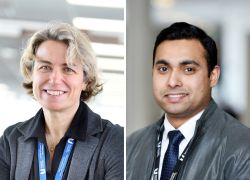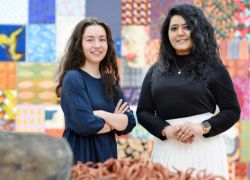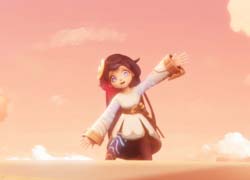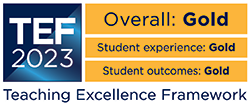Computing graduates bring museum exhibits to life
Ancient museum exhibits will be brought to life through an interactive computer game being created by Teesside University graduates in collaboration with Durham University.
Teesside University academic Dr Maggie Parker is leading the team creating the online game, which links to artefacts at Durham University’s Oriental Museum.
The Oriental Museum is devoted to the art and archaeology of the Orient, with its Chinese and Egyptian collections among the finest in Britain.
Dr Parker, Senior Lecturer in Games Animation, said: 'The many possibilities of game technology are being used to engage the public in unexpected ways and this is an exciting opportunity to use game software to create and expand interactive uses of museum exhibits.
'We have so much experience and talent within Teesside University’s School of Computing and this provides us a great way of using that to reach out to the general community.'
She added: 'It's an exciting collaboration between Teesside University’s School of Computing and Durham University’s Oriental Museum.
'Computer games have the power to bring the past to life and transport a person into another world. The game will support other materials available within the museum setting, allowing further alternative insights into how people lived in those days.'
Once fully developed, the game will be available on the museum’s website, enabling visitors to interact with the museum exhibitions from anywhere in the world. It is also hoped that versions of the game can be developed for use on smartphones and tablets.
Dr Parker added: 'Inspired by the Oriental Museum's renowned Designated Collections, it will marry game software technology with representational narrative artworks. The work will invite its audiences to enter a digital landscape and to explore and interact with a series of digitised sub-works set within a virtual environment.'
Heading the graduate team is Christian Frausig, director of Hammerhead Interactive. Christian graduated from Teesside University in 2013 with a first class BA (Hons) Computer Games Design.
He said: 'We developed an underwater game for the Oculus Rift virtual reality headset, as part of a group project in our final year. The positive feedback we received at ExpoTees and various game conferences, gave us the courage to start a company through DigitalCity Innovation. We are now developing virtual reality games and visualisation applications.
'Dr Parker approached us to ask if we could design an application around the Book of the Dead from Ancient Eqypt, for the Oriental Museum in Durham. She was interested in emergent technologies such as virtual and augmented reality games, which was the perfect opportunity for us.'
He added: 'The final game uses the smartphone to detect QR codes dotted around the museum, which in turn launch games related to the artefacts. An array of spells, weapons and riches are added to the tomb and used to solve challenges along the journey to the afterlife. One game tracks the player movement as they walk around a virtual sarcophagus, while taking part in the mummification.'
Christian, who is originally from Denmark, added: 'I chose Teesside to study because of its University of the Year award and its reputation for teaching digital media.'
Dr Craig Barclay, Oriental Museum curator, said: 'This project represents a unique opportunity for a museum which is home to some of the country’s finest historic collections to work with digital innovators to develop new means of engaging with audiences.
'Over the last 50 years the focus of the museum has shifted. The museum was founded to support the work of the University and today remains firmly committed to underpinning teaching and research, with more than 20 academic courses making use of the museum’s collections each year. This has meant constantly adapting the museum to meet the developing needs of our diverse users.'
The museum is open to the public, seven days a week, attracting over 24,000 visitors each year.
 Teesside University academics join prestigious network of
...
Teesside University academics join prestigious network of
... Curatorial studies culminating with international art
...
Curatorial studies culminating with international art
... Teesside animation graduates receive top regional Royal
...
Teesside animation graduates receive top regional Royal
...